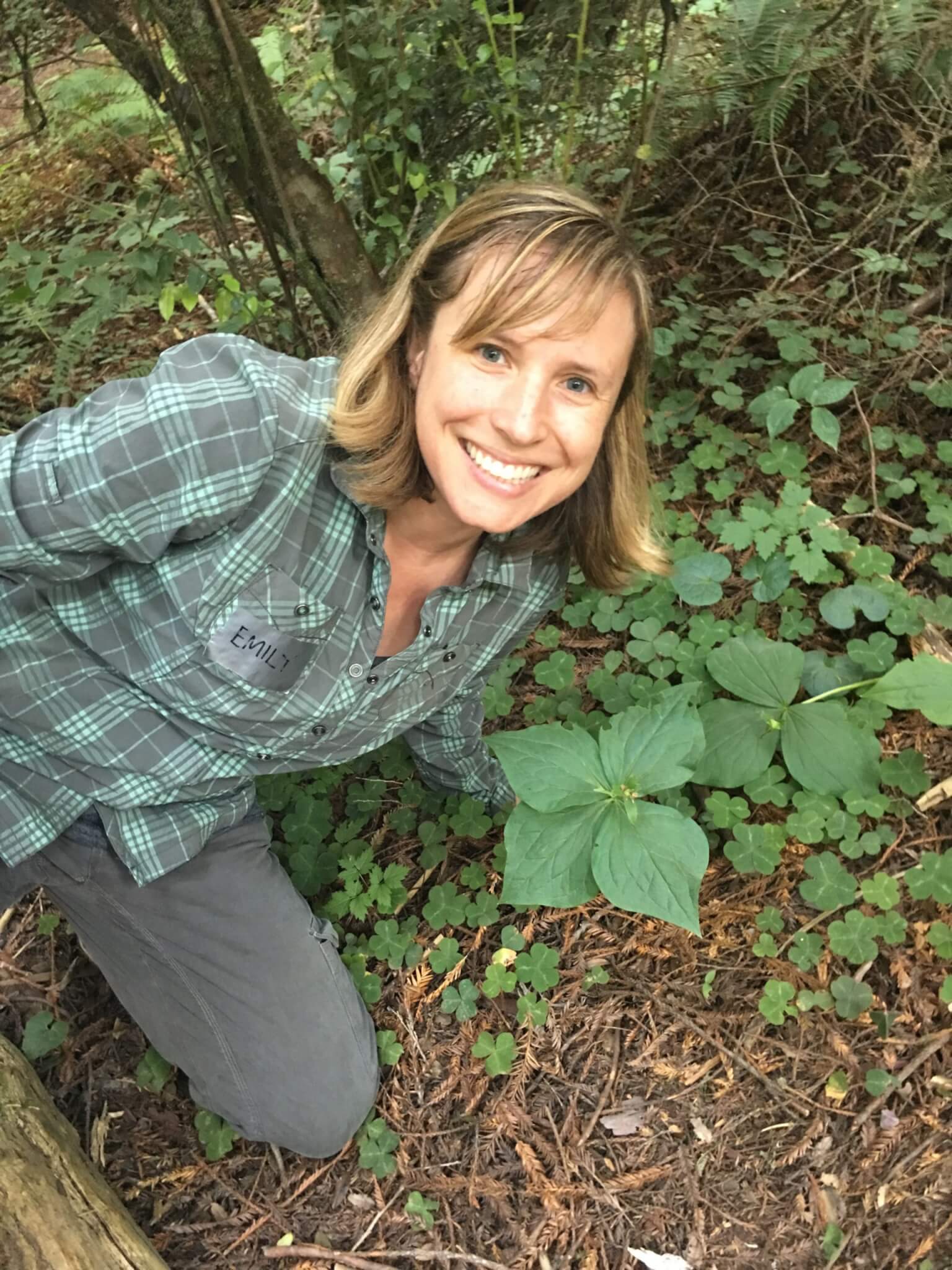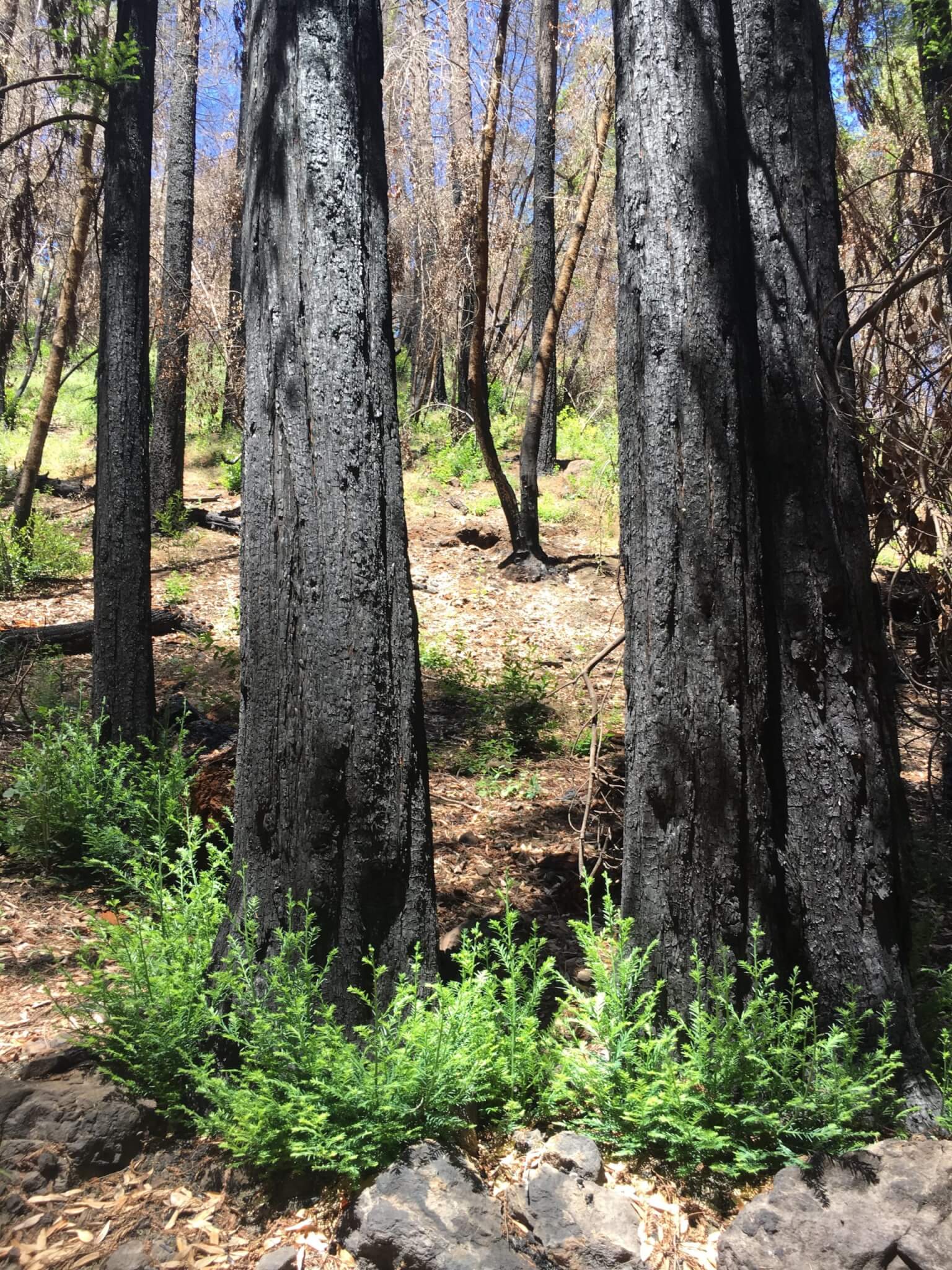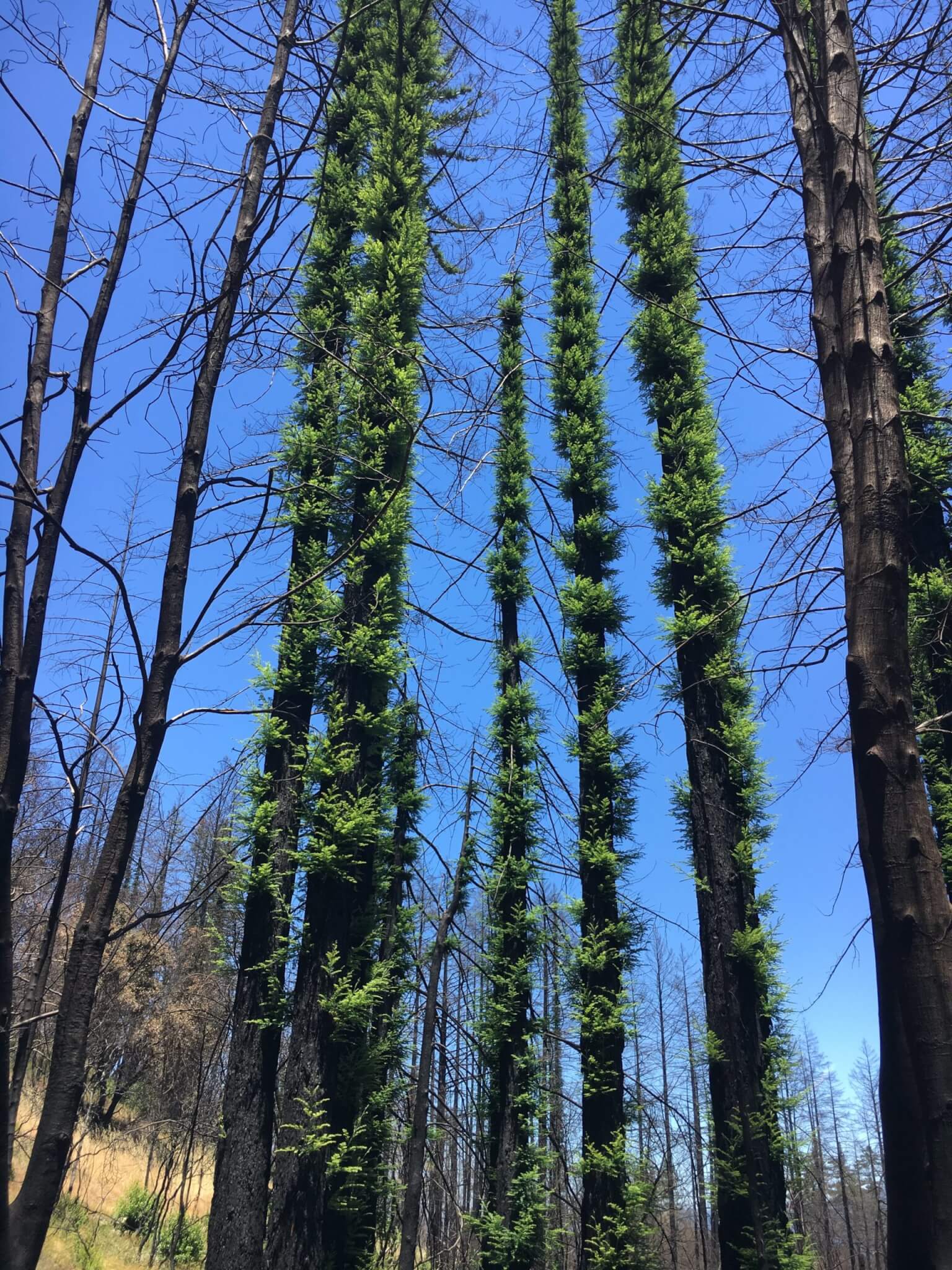SemperVoices: Ten signs of hope in a forest after fire
Emily Burns discusses resiliency and surprising symbols of renewal in the coast redwoods.
On top of an already trying year, seeing fire burn through our beloved coast redwood forests has been especially hard. While it is tough to see the bright spots among the ashes, they are there if you know where to look. We spoke to biologist and redwood expert Emily Burns on what indicators herald signs of recovery in the forest. She gave us not only hope for the future, but a renewed sense of awe for the coast redwood forest. Burns also joined us Under the Redwoods to present these and other signs of hope.
1. Beautiful forests have burned many times before.
When going into evaluate a landscape touched by fire, Burns says it is useful to step back and not only see the forest from the trees, but how previous events and conditions have shaped the forest time and again. It helps to take the past into account when thinking about what the future may hold. Some of the ancient redwoods of Big Basin have been around since before the Roman Empire and have seen their fair share of fire. It may be that they are still standing because of the fire they have experienced and not in spite of it.
2. Fern crowns emerge within a month.
After the Lockheed Fire in 2009, Burns was struck by how soon she witnessed the little fiddleheads of ferns shooting up from underground. Ferns send out leaves from a rhizome, which is like a starchy root system, within weeks of a wildfire. They are one of the biggest and reoccurring symbols of hope in the forest.
3. Many forest-dwelling creatures are prepared to shelter-in-place.
While we hunker down to weather storms or wait out a pandemic, many forest creatures can burrow into the soil to do the same. Banana slugs and salamanders can dig deep enough into the ground to make it through dry seasons or a blaze.
4. Redwoods can heal over their burn scars.
Seeing redwoods with bars of charred bark next to striations of unscathed bark is an indication that the trees have grown since a fire. The bark we see on the surface is the dead growth of the tree being pushed outward, so when we see the new bark it is similar to a growing belly. In fact, some trees can actually grow quite fat and happy after a fire because the blaze has cleared the brush that was previously competing for resources.
5. Bats roost in basal cavities created by fires that burn hot.
Even when fires burn intensely enough to harm a tree, the cavities they create within the trees can become habitat for other life forms. These become the perfect homes for bats and owls, who will move right in and make themselves at home in these newly minted apartments.
6. New growth can sprout up from the roots of burned trees.
Basal sprouting can occur immediately after a fire, and it is exciting to see these little green sprouts surrounding the base of a burned redwood. After a tree dies, a new generation of trees emerge from the roots of the fallen redwood, often creating a near-perfect circle that you may hear referred to as a fairy ring. This is one of the ways redwoods regenerate, giving them the tremendous advantage of already having a full root system compared to species that reproduce through seeds alone.
7. Trees can become fuzzy with new growth.
Charred trees can dramatically change with fuzzy green growth up and down the trunk and branches. You may hear the term of bottle-brush trees or the technical term, epicormic sprouting, but Burns prefers the term fuzzing-out because that is exactly how they look — like big fuzzy green teddy bears. Even if an entire tree is charred, one branch with this fuzzy growth can be an indicator that the tree will recover.
8. Exceptional mushroom crop after a fire.
Burns observed the exponential growth of morel mushrooms that emerged from an area where white fir trees had been completely burned through. Genetic diversity is a key contributor to the long-term health and resilience of forest, so it is exciting to see the room fire can make for new species to thrive.
9. Prescribed fires help maintain a healthy balance for redwoods.
Besides helping make room for diverse species to flourish, prescribed fire and thinning protects the monarchs of the forest and prevents them from future catastrophic damage. Similar to a buffer area around a house, some species need a little area to ensure that a blaze doesn’t have so much fuel that it burns hot enough to sear through their protective layers. Smaller and more frequent fires can also clear the underbrush that may have been choking large redwoods and give them a chance to flourish.
10. New growth can carpet the forest floor.
There are few things that are as encouraging as the whole forest floor carpeted with the green of new growth. Whether it is the emergence of ferns or the saplings from the seeds of giant sequoias released by fire, Burns says that it is not uncommon to see signs of new life all around after a fire.
While there is much loss after a fire, we can look to nature for signs of hope and resiliency. Coast redwoods have superlative powers, but as we have witnessed with the recent wildfires, they are not impervious. Sempervirens Fund is here to ensure that the forests not only survive but thrive long into the future. Maintaining the right balance is not only important for the health of our forests, but for the health of our communities. The air we breathe, the waterways we rely on, and the communities we’ve built all hang in the balance of our environment.
Check out Under the Redwoods for webinars about redwoods featuring Emily Burns, Ian Rowbotham, and more.




